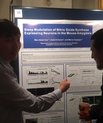Our research is based on the central hypothesis that functionally important neuronal circuit motifs are repeatedly used across various brain regions and species, and therefore identifying and understanding the structure and function of such motifs could give insights into the functional organisation of the brain. The mouse visual motion circuits, particularly the retina and its direct brain target the superior colliculus, provides us with an approachable substrate to work towards this goal, given its functionally and genetically well-defined cell types, multi-layered organization and tractable visually-guided behaviors. Two key organising principles that characterize not only the visual motion circuits of mammals and insects, but also other neuronal systems, are 1) parallel processing and 2) asymmetry of neuronal connectivity. We have focused, and will continue to focus, on questions relevant to these organising principles (Yonehara et al., Nature, 2011; Yonehara et al., Neuron, 2013).
The research plan is firstly to identify a computation performed by a given neuronal circuit comprising distinct cell types in the adult brain. Secondly, to investigate how the computation is performed by linking the activity and synaptic connectivity of individual cell types in the circuit to the computation that the circuit achieves. Thirdly, to examine the role of individual cell types in transforming the sensory input into output innate behavior or eye movement control. Finally, to study the genetic mechanisms by which the elementary circuit motifs are assembled, and how its dysfunction can result in disease. Ultimately, by these experiments we aim to link genes to behavior. We will also develop new genetic and viral technologies that facilitate probing circuit function in healthy and diseased systems.
The Yonehara group currently has projects available for Postdocs, Master and PhD students. Please contact Group Leader Keisuke Yonehara directly, if interested. See current job announcements here










